|
 Gliophorus lilacipes Gliophorus lilacipes
SynonymsHygrocybe lilacipes
BiostatusPresent in region - Indigenous. Endemic
Images (click to enlarge)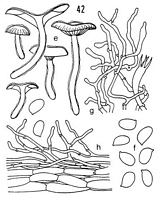
Caption: Gliophorus lilacipes Hk. (type): e. carpophores. - f. spores. - g. cheilocystidia and basidia. - h. cuticle | 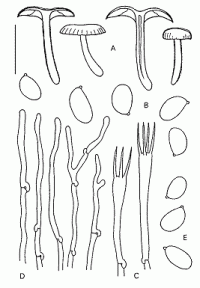
Caption: Fig. 30 Gliophorus lilacipes Horak.(A-D: ZT 974): A. basidiomes.
B. spores. C. basidia. D. cheilocystidia. (PDD 27097): E. spores. | 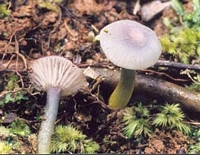
Caption: Gliophorus lilacipes
Owner: Kaimai Bush | 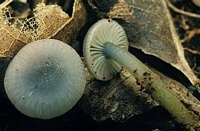
Caption: Gliophorus lilacipes
Owner: Kaimai Bush | 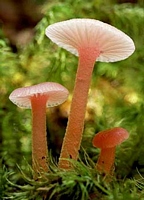
Caption: Gliophorus lilacipes?
Owner: Kaimai Bush | 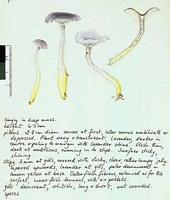
Caption: Watercolour
Owner: G.M. Taylor | 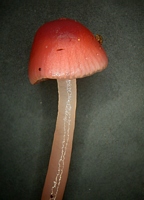
Caption: FUNNZ: 2006/0430, See public note for more information
Owner: FUNNZ | 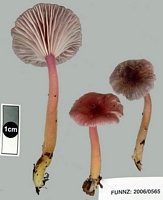
Caption: FUNNZ: 2006/0565, See public note for more information
Owner: FUNNZ | 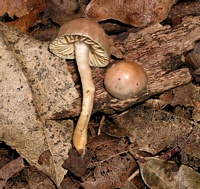
Owner: J.A. Cooper | 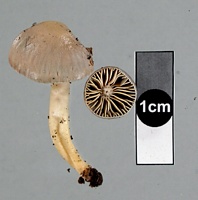
Owner: J.A. Cooper | 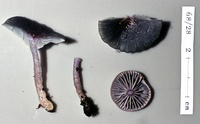
Caption: ZT68-028
Owner: E. Horak: © Creative Commons Attribution-Noncommercial 3.0 New Zealand | 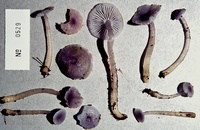
Caption: ZT0529
Owner: E. Horak: © Creative Commons Attribution-Noncommercial 3.0 New Zealand | 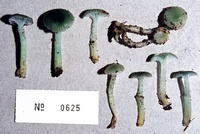
Caption: ZT0625
Owner: E. Horak: © Creative Commons Attribution-Noncommercial 3.0 New Zealand | 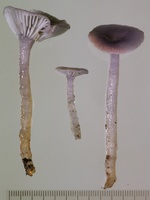
Caption: ZT0745
Owner: E. Horak: © Creative Commons Attribution-Noncommercial 3.0 New Zealand | 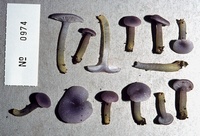
Caption: ZT0974
Owner: E. Horak: © Creative Commons Attribution-Noncommercial 3.0 New Zealand | 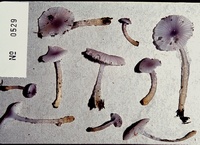
Caption: ZT0529
Owner: E. Horak: © Creative Commons Attribution-Noncommercial 3.0 New Zealand | 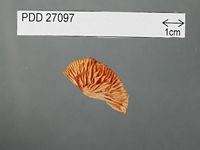
Caption: Dried type specimen
Owner: Herb PDD |
Article: Horak, E. (1990). Monograph of the New Zealand Hygrophoraceae (Agaricales). New Zealand Journal of Botany 28(3): 255-306 (http://www.rsnz.org/publish/abstracts.php).
Description: Pileus -45 mm, hemispherical becoming planoconvex, broadly umbilicate in aged
specimens brilliant green-blue, fading to blue-brown or greenish blue, darker
at centre; glutinous, margin striate, hygrophanous, glabrous. - Lamellae 8-14
(1 -3) distant, broadly adnate to decurrent; lilac-blue or pale green-blue,
fading with age, edges concolorous with gelatinised, grey thread. - Stipe 20-60
x 25 mm, cylindrical, equal to attenuated towards apex; lilac to pale blue above,
yellowish or ochraceous at base; glutinous, hollow, single. - Context brilliant
lilac in upper portion of stipe, yellow-orange in base, reddish on drying. -
Odour and taste not distinctive. - Chemical reactions on pileus: KOH - orange
to pink; HCI, NH3 - negative.
Spores 5-7 x 3-4um, ovoid. - Basidia 25-45 x 5-6 um, 4-spored. - Cheilocystidia
forming sterile edge, composed of cylindrical, densely interwoven hyphae (2-6
um diam.), occasionally branched at tips, membrane strongly gelatinised. -Pileipellis
an ixocutis of repent to suberect, cylindrical hyphae (27 um diam.), sometimes
with branched tips, membranes strongly gelatinised, with plasmatic pigment;
clamp connections present (P1. 1, Fig. 6).
Habitat:
ECOLOGY: Common; saprobic on soil among litter in broadleaved-conifer forests
Nothofagus Leptospermum, Weinmannia, Dacrydium, Agathis), occasionally
also on rotten wood or on debris of tree fems. January-June.
Distribution: DISTRIBUTION: NZ (NA, G, WL, SL).
Article: Horak, E. (1973). Fungi Agaricini Novazelandiae I-V. Beihefte zur Nova Hedwigia 43: 200 p.
Description: Pileus 15-45 mm diam., hemispherical when young later becoming plano-convex, aged specimen broadly umbilicate, deep green-blue fading to blue-brown or greenish-blue, darker at the centre, glutinous, margin striated, hygrophanous, glabrous. Lamellae broadly adnate to decurrent, lilac-blue or greenish-bluish, fading, distant; gill edge with gelatinized, grey coloured thread. Stipe 20-60 x 2-5 mm, cylindric, equal to attenuated towards the lilac apex, yellowish or ochraceous at the base, glutinous, hollow, single. Context: deep lilac at the upper portions of the stipe, reddish on drying. Taste and odor not distinctive. Chemical reactions on pileus: KOH - orange to pink; NH3 and HCl- negative.
Spores 4.5-6 x 3-4.5 µm, ovoid, smooth, inamyloid. basidia 25-35 x 5 µm, 4-spored. Cheilocystidia forming a sterile gill edge, consisting of cylindric cells densely interwoven and branched at the tips, strongly gelatinized and forming the glutinous thread, 2-6 µm diam. Epicutis of repent or suberect, cylindric gelatinized hyphae (2-7 µm diam.), occasionally branched at the free ends, forming an ixocutis. Clamp connections present.
Habitat: On soil in Nothofagus forest with Dacrydium, Weinmannia, etc. New Zealand.
Notes: Aging and drying change the colours of this beautiful polychromous species and one is puzzled to see many different shades and combinations of its typical colours. However, the lilac-blue tints at the upper part of the stipe and the relatively small spores are distinctive characters for its identification.
|